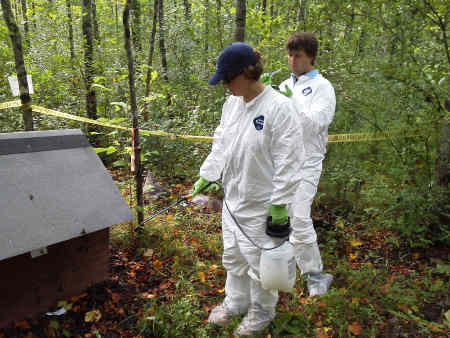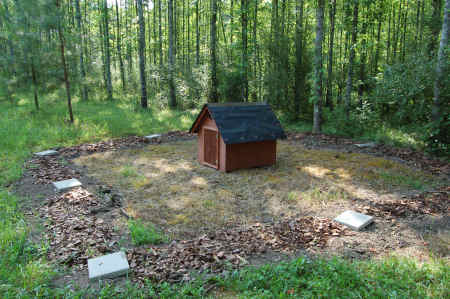Return to Research


More than three acres have been set aside at the UT Forest Resources Research and Education Center (FRREC) to evaluate the efficacy of products and strategies used against the odorous house ant and other pest ants. Twenty-eight dog houses, which are placed in plots on the ground near the grass/woods interface or slightly deeper in the woods, simulate urban structures. (An original house plot is pictured at right.) The small plots have been modified over the past four years to more closely simulate a home landscape and to provide more shade and moisture.
The odorous house ant, Tapinoma sessile (Say), is the principal ant invading structures in the mid-south region of the U.S. (Hedges 1998) and is ranked as one of the top five pest ants in the U.S. (Hedges 2000). Odorous house ants and eighteen other ant species naturally occur in these Forest Resources Research and Education Center habitats. In 2012, we evaluated two standard insecticidal low volume sprays and an experimental one to compare their effectiveness against these ants. Using the FRREC location allows experimental insecticides intended for the urban market to be tested in a manner that will limit public exposure to the products.
